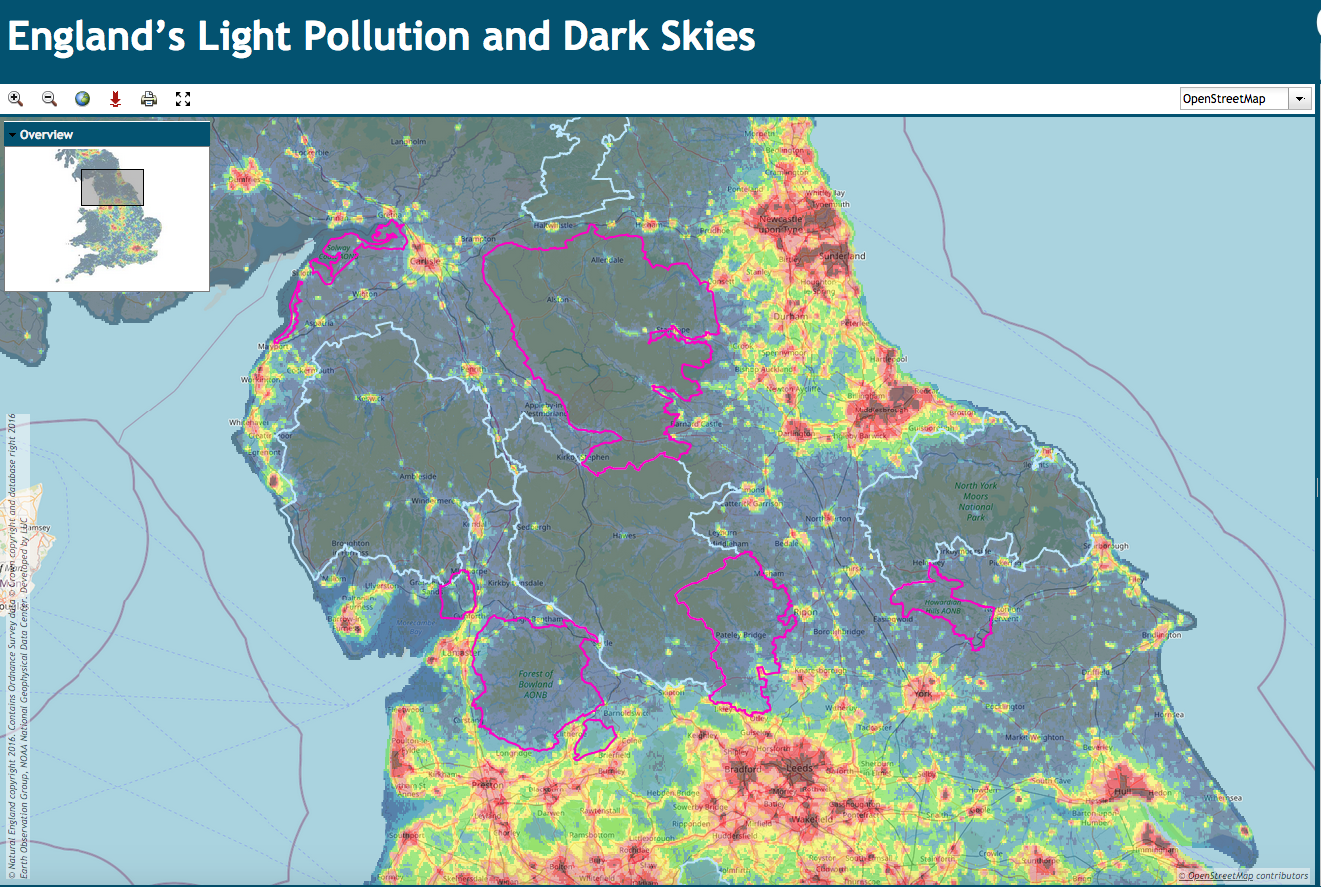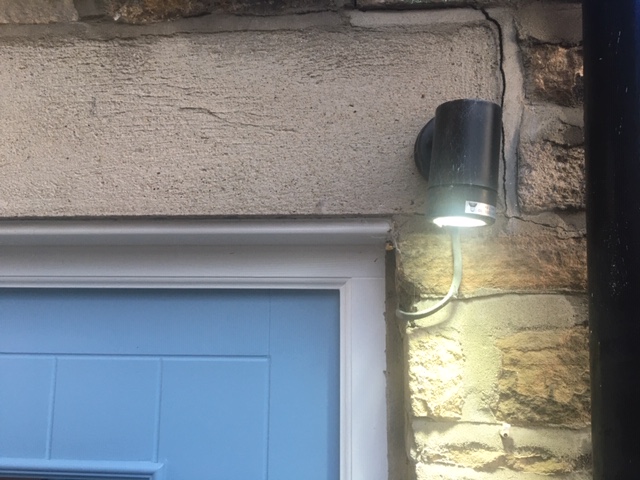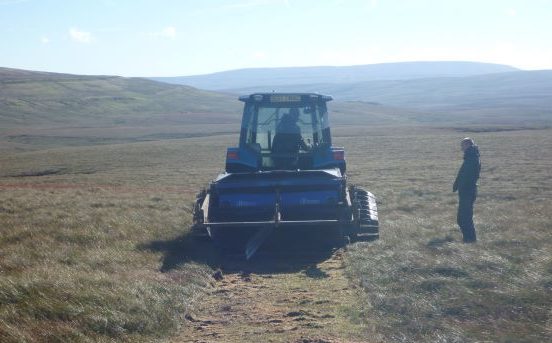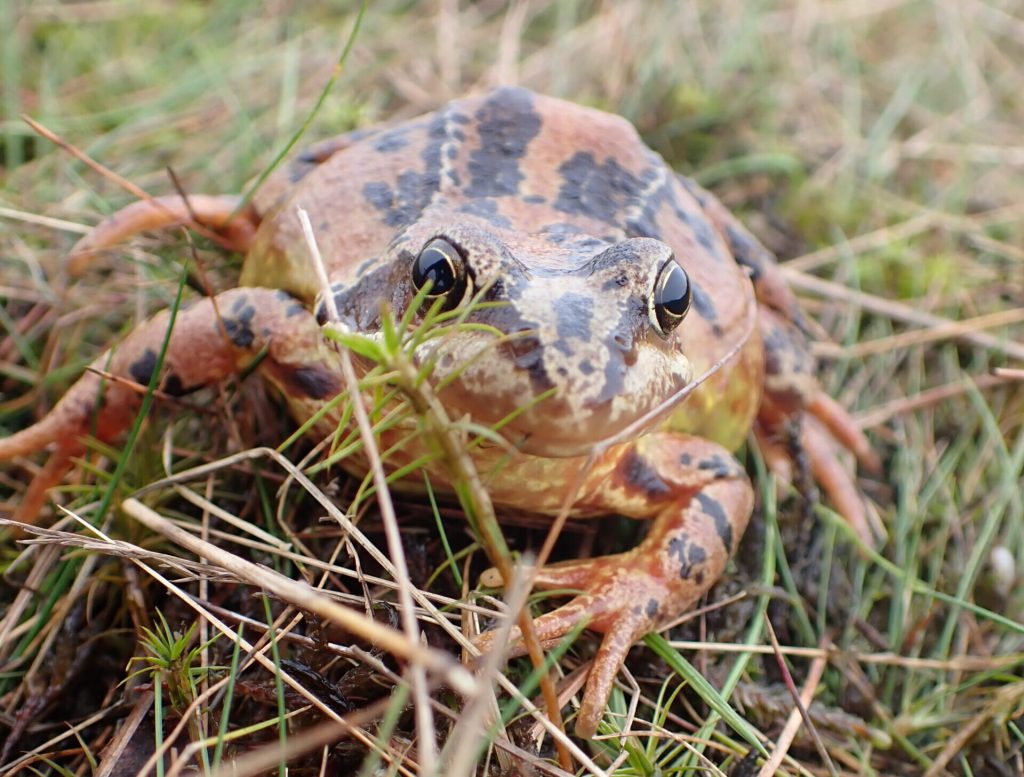North Pennines Stargazing Week
Keeping dark places dark
1 November 2020
Keeping dark places dark
by Shane Harris, Responsible Tourism (and Dark Sky) Lead at the North Pennines National Landscape
I’ve always liked the dark. I spent most of my twenties underground in the Yorkshire Dales and Derbyshire exploring caves and potholes – I was thinner in those days. The classic ‘trick’ we’d play with people venturing into the underworld for the first time was to get everyone to turn their lights off for 10 minutes. It would be so dark that you would literally be unable to see your hand in front of your face – impenetrably dark… Some people found it oppressive and claustrophobic but not me – I’d lie back on the cave chamber floor and deeply relax. I found the sense of tranquillity second to none – probably akin to being in a ‘isolation tank’ but without the new age music. It occurs to me that few people in England experience this level of darkness – so fond have we become of illumination – both indoors and out. Obviously this is an extreme example but my point is that in lots of instances we have forgotten what ‘dark’ is and what it feels like because we have lost it from our daily lives.
Before the proliferation of outdoor lighting – certainly in rural areas – people would have had a daily interaction with dark nights and the stars – would have felt that deep connection with the universe and the light of the cosmos and the calming, restorative influence that such a connection can bring. The truth is that humans, and all other creatures, need the dark.
Pristine night skies
The North Pennines is one of the places in the country that is still ‘properly dark’. Eighty-six percent of our night skies are classified as ‘pristine’ – we’re the darkest mainland National Landscape. Here we are blessed with seeing countless thousands of stars on clear nights and regularly seeing the river of stars that characterise our home galaxy – The Milky Way – is something we’re used to.

This is a map of northern England showing levels of light pollution – with National Landscape and National Park boundaries overlaid. If you visit https://www.nightblight.cpre.org.uk/maps/ you can zoom in on where you live and see the levels of light pollution for yourself.
The image above shows the North Pennines in the middle – with low levels of light pollution. The settlements further East – Durham, Darlington, Sunderland, Newcastle, Hartlepool are under, to a greater or lesser extent, a washed out night sky – bereft of stars. For people in these towns and cities seeking stars, and a connection with the vastness of the universe, the North Pennines is their closest dark sky place.
Our National Landscapes and National Parks have often been referred to as the country’s ‘green lungs’ – I’d like to suggest that they are also our ‘dark hearts’ (but in a good way). Taken together 53% of England’s pristine dark skies are found within our Protected Landscapes. In the North Pennines 86% of our skies are pristine – but the flip side is that 14% aren’t. What can we do about this and how can we protect and cherish this natural ‘resource’. When I think about these issues I’m drawn to the undeniable fact that 50% of our landscape is actually skyscape – or for our purposes ‘nightscape’ – and we need to look up as well as down as we collectively seek to ‘conserve and enhance’.
What is light pollution?
“Brightening of the night sky caused by street-lights and other man-made sources, which has a disruptive effect on natural cycles and inhibits the observation of stars and planets” – definition from Oxford Languages.
The excessive and/or inappropriate use of artificial light can have serious environmental consequences. Light pollution is usually broken down into the following components:
- Skyglow – brightening of the sky over settlements
- Light trespass – light falling where it is not needed/is harmful e.g. through bedroom windows
- Clutter – bright, confusing, excessive use of illumination at a site
- Glare – excessive brightness, which creates negative issues e.g. security lights shining onto a public road, blinding car drivers
Losing the Dark [https://www.youtube.com/watch?v=dd82jaztFIo] – this 6 minute YouTube film produced by the International Dark-Sky Association is well worth a view – it highlights many of the issues associated with light pollution.
Why should we be worried?
In the recent past – less than a century ago – everyone would have been able to look up on a clear night and see stunning night skies – studded with twinkling stars. The widespread use of artificial lights outside has changed this drastically and this change has negative consequences for nature, our environment, energy consumption and human health.
Light pollution can have a profoundly negative impact on wildlife – it can affect how plants and animals respond to night-time and day-time with consequential impacts on their behaviour. The impact on our bat species can be particularly severe. Bats have adapted to a nocturnal pattern of life, partly to avoid predation from birds of prey e.g. sparrowhawks. Light pollution can delay bat emergence from roosts which can reduce the available foraging time – with an impact on survival and growth rate.
In terms of human health exposure to artificial light at night has been shown to have a negative influence. Research indicates that inappropriate exposure can result in increased risks for obesity, depression, sleep disorders and diabetes. Some of the impact appears to be related to disruption of our circadian rhythm and the impact that can have on the production of the hormone melatonin. Night-time exposure to artificial light suppresses melatonin production – which has a variety of impacts.

Dark Sky Places
The International Dark Sky Places conservation program recognises and promotes excellent stewardship of the night sky. The programme began in 2001 with the aim of encouraging communities and protected areas around the world to preserve and protect dark skies through responsible lighting policies and raising public awareness.
The programme is managed by the International Dark-Sky Association, based in Arizona, and currently there are 16 Dark Sky Reserves globally. Four of these are in the UK: Brecon Beacons; Cranborne Chase; Exmoor; and Snowdonia. In addition there are three Dark Sky Parks in the UK: Bodmin Moor; Galloway Forest Park; and Northumberland National Park and Kielder Water & Forest Park.
Dark Sky Reserves are places which “possess an exceptional or distinguished quality of starry nights and [a] nocturnal environment that is specifically protected for its scientific, natural, educational, cultural, heritage and/or public enjoyment. Reserves consist of a core area meeting minimum criteria for sky quality and natural darkness, and a peripheral area that supports dark sky preservation.”
How to reduce light pollution at home?
Avoiding light pollution at home is NOT about switching off all your lights – it’s rather about using the right sort of light, at the right time, lighting what you need to see. It’s about cutting down on ‘wasted’, unproductive light.
Light only what you need
- Only illuminate what you need to see e.g. steps, paths
- Avoid lighting trees, for example, which might well be homes for bats, owls and other nocturnal wildlife
- Use motion sensors and timers on outdoor lights – so that they only come on when you really need them
- Avoid over-lighting and glare – a 5w LED bulb, for instance, is equivalent to a 60w incandescent
Use directional lights
- Poorly positioned lights can actually cause more problems than they solve – through glare
- Make sure that lights point down to the ground and onto the objects that you need to illuminate – this way you won’t contribute to sky glow
- Use shielded lights to avoid light escaping above the horizontal
Don’t use floor lights
- Floor lights simply light up to the sky and resultant glare can make matters worse – in terms of illuminating the features you want people to see
Avoid cool white and blue lights
- For wildlife colour temperature of LED bulbs matters
- Use ‘warm’ white options as opposed to ‘cool’ white and blue wavelengths
- Warmer whites, oranges and reds are better options to opt for to look after nocturnal wildlife
- Choose LED lights that emit light below 3,000 kelvin

Additional resources and information
Our colleagues in the Northumberland International Dark Sky Park have produced a handy good practice guide for outside lighting [https://www.northumberlandnationalpark.org.uk/wp-content/uploads/2017/05/NNP-outside-lighting-guide.pdf] There’s some specific information about the Dark Sky Park but much useful information which is applicable at other dark site.
Find out more about DarkSky International here: www.darksky.org
Lighting: types, qualities and impacts [https://cranbornechase.org.uk/wp-content/uploads/2020/01/AONB_lights_fittings_BMizon1-1.pdf] this document, written, by Bob Mizon (Commission for Dark Skies) is a really useful overview.
Our colleagues in the Cranborne Chase (which became an International Dark Sky Reserve in October 2019) have produced this excellent ‘good practice note’: Examples of dark sky compliant lighting units for use on new builds and refurbishment in and around the AONB [https://cranbornechase.org.uk/wp-content/uploads/2020/01/Position20Statement207b_examples20of20dark20sky20compliant20lighting20units1.pdf]
This blog is part of the North Pennines Stargazing Week 2020. Visit our Stargazing Week hub for more events, blogs and features.











